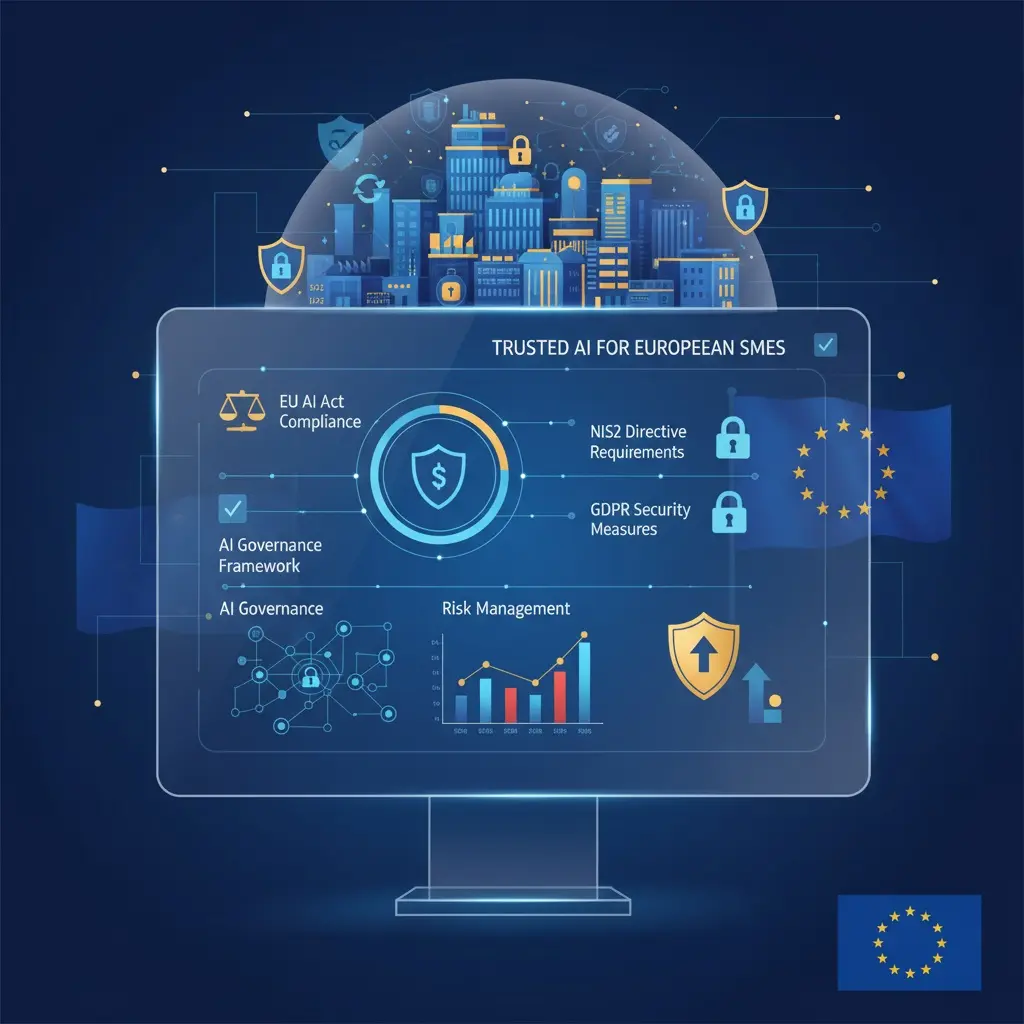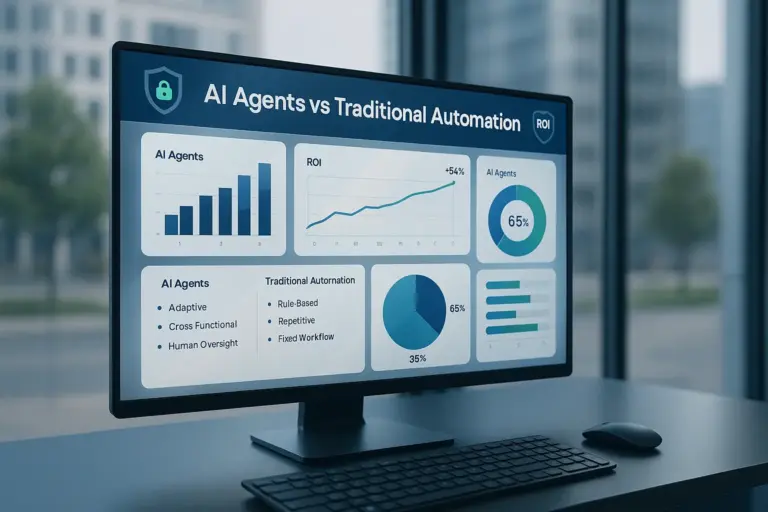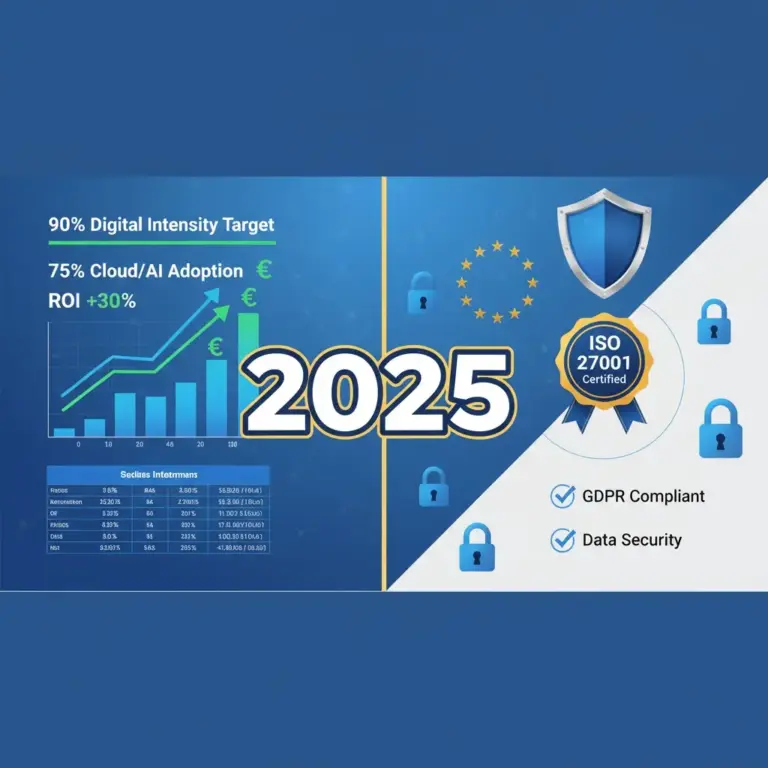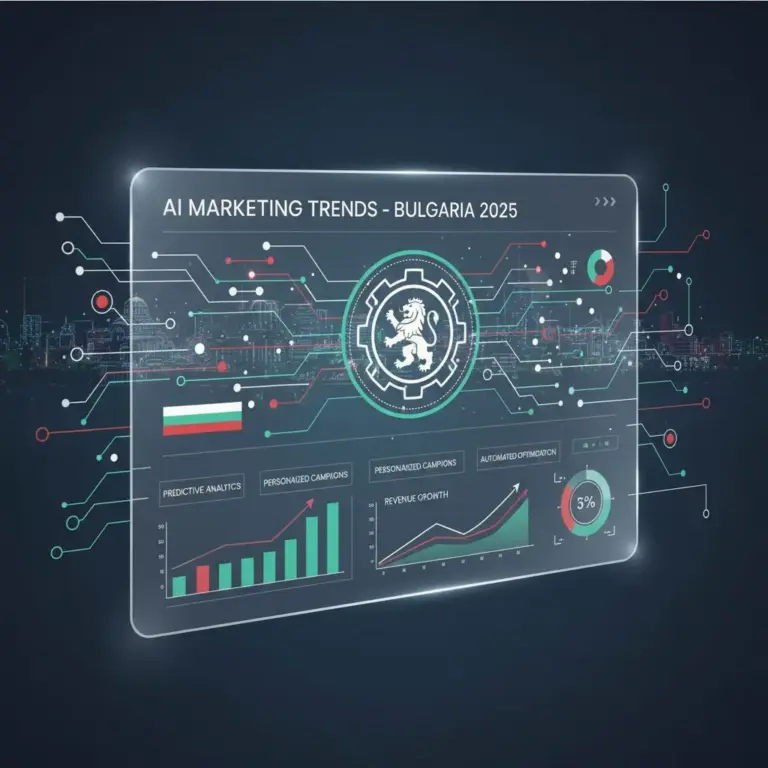European SMEs are adopting AI fast—but attackers, regulators, and customers are all watching. This guide explains the latest risks and rules, then gives you a 14‑day action plan to deploy AI securely and compliantly across Bulgaria and Germany.
To effectively implement Secure AI for SMEs, organizations must assess their AI capabilities and align them with emerging regulations.
Integrating Secure AI for SMEs into business processes can enhance operational efficiency and ensure compliance with regulatory frameworks.
Moreover, Secure AI for SMEs fosters a culture of accountability and responsibility in AI usage across teams.
Future innovations will increasingly hinge on implementing Secure AI for SMEs that adapt to changing market demands.
As businesses navigate this landscape, the importance of Secure AI for SMEs cannot be overstated.
Secure AI for SMEs is becoming the cornerstone of business resilience in 2025. As the EU AI Act and NIS2 Directive come into force, small and medium-sized enterprises across Europe must adopt AI systems designed with security, compliance, and transparency at their core. This practical playbook explains how to build secure AI for SMEs that aligns with EU regulations while maintaining innovation and trust.
Implementing secure AI for SMEs means more than deploying firewalls or encryption. It involves creating a governance framework that ensures AI systems are compliant with the EU AI Act, NIS2, and GDPR. By embedding secure AI practices into daily operations, SMEs can protect sensitive data, reduce legal risk, and gain customer trust.
In 2025 and beyond, secure AI for SMEs will define competitive advantage across Europe — balancing innovation with compliance and confidence.
Why Secure AI for SMEs is Essential for Business Success
With a focus on Secure AI for SMEs, businesses can navigate challenges while seizing new opportunities.
- EU AI Act: Entered into force in 2024; GPAI (foundation model) obligations started on 2 Aug 2025; high‑risk system obligations phase in by 2026. European Commission+2Digital Strategy EU+2
- NIS2: Cybersecurity rules apply EU‑wide; implementing regulation 2024/2690 details technical requirements; ENISA published practical guidance in June 2025. Digital Strategy EU+2ENISA+2
- Top technical risks: Prompt injection, insecure output handling, data leakage, model DoS, supply chain—codified in OWASP LLM Top 10 (2025). OWASP Foundation
- What to implement: ISO/IEC 42001 (AI management system), NIST AI RMF + GenAI Profile, and NCSC/CISA secure AI development guidelines. NCSC+3ISO+3NIST+3
Table of Contents
- The 2025 AI Threat Picture for SMEs
- EU Compliance Essentials (AI Act, NIS2, GDPR/DSGVO)
- The 14‑Day Secure AI Implementation Plan
- Turn Security & Compliance into a Sales Advantage
- AI Governance & Safety that Scales
- Mini Case Study: A Secure “Agentic” AI for Procurement
- FAQ
- CTAs for BG/DE
1) The 2025 AI Threat Picture for SMEs
What’s actually being exploited in GenAI today? The OWASP LLM Top 10 (2025) highlights the most common failure modes: LLM01 Prompt Injection, LLM02 Insecure Output Handling, LLM06 Sensitive Information Disclosure, LLM04 Model DoS, LLM05 Supply Chain and more. These map directly to SME use‑cases like automated email replies, customer chat, code assistants, and agentic workflows. OWASP Foundation
Fast checks you can implement now
- Hard rule‑based guardrails for prompts + deny‑lists for known injection patterns; don’t rely on the model alone.
- Output validation/sandboxing before LLM results touch production systems.
- Least‑privilege connectors for tools/plugins; isolate secrets; sign and verify model & tool artifacts.
- Red‑team prompts and runbooks for model DoS (time/compute quotas).
- Data minimization & masking to avoid inadvertent PII exposure.
Why this matters in Europe: ENISA’s annual threat work shows attacks on availability and data continue to dominate; GenAI capabilities amplify social engineering and automation at scale. ENISA
To sustain a competitive edge, integrating Secure AI for SMEs into strategic planning is crucial.
2) EU Compliance Essentials (AI Act, NIS2, GDPR/DSGVO)
AI Act: What applies in 2025–2027
Employing Secure AI for SMEs will not only mitigate risks but also open new growth avenues.
The growing reliance on Secure AI for SMEs emphasizes the need for robust training in AI ethics.
- The AI Act entered into force 1 Aug 2024, with a risk‑based approach (minimal, limited, high, unacceptable). GPAI rules began applying 2 Aug 2025; high‑risk obligations and enforcement ramp up through 2026, with full effect by 2027. European Commission+2Digital Strategy EU+2
- Harmonized standards (CEN/CENELEC) are intended to give “presumption of conformity,” critical before high‑risk obligations start in Aug 2026. European Parliament
Regular updates on Secure AI for SMEs initiatives can keep all stakeholders informed and aligned.
What SMEs should do
- Document AI use‑cases and classify risk.
- For GPAI usage (e.g., large foundation models), capture model cards, training data provenance claims, red‑team reports from your vendor to meet transparency/risk duties. Digital Strategy EU
Ultimately, prioritizing Secure AI for SMEs is essential for long-term viability in the evolving digital landscape.
NIS2: Cybersecurity controls you’ll be asked to prove
- NIS2’s implementing regulation 2024/2690 sets technical & methodological requirements; ENISA issued technical implementation guidance (June 2025) with practical mappings/evidence examples—very useful for audits and vendor questionnaires. ENISA+1
- The Commission underlined application and enforcement from 18 Oct 2024; many Member States faced transposition follow‑ups in May 2025 (incl. BG and DE). Digital Strategy EU+1
GDPR/DSGVO: Still the baseline
- Maintain lawful basis, DPIAs, TIAs for transfers, 72‑hour breach notices to the relevant authority (e.g., CPDP in Bulgaria). КЗЛД
- Germany (BSI) has practical guidance for safe generative AI adoption in organizations—use it to shape security policies and staff training. BSI+1
3) The 14‑Day Secure AI Implementation Plan
Standards we align to: ISO/IEC 42001 (AI management systems), NIST AI RMF + GenAI Profile, and NCSC/CISA secure AI development. NCSC+3ISO+3NIST Publications+3
Day 1–3 — Inventory & Risk
The emphasis on Secure AI for SMEs will drive collaborative efforts across industries.
- List all AI use‑cases (customer chat, internal copilots, RPA + LLM tools).
- Classify risk (minimal/limited/high) and note if GPAI is involved.
- Identify PII/Special Category data flows; create/refresh DPIA.
Day 4–6 — Guardrails & Access
- Implement prompt‑injection filters, output sandboxing, rate limits.
- Enforce least‑privilege for tool calls (per‑action scopes, just‑in‑time tokens).
- Mask PII in prompts; store logs with cryptographic integrity.
Day 7–9 — Secure Dev & Testing
Engaging with vendors who prioritize Secure AI for SMEs can enhance overall system integrity.
Investing in training for Secure AI for SMEs not only enhances expertise but also ensures readiness.
- Apply NCSC/CISA secure‑by‑design practices to your AI pipeline.
- Add adversarial prompt tests to CI (red‑team packs vs LLM01‑LLM10).
- Run a tabletop model DoS scenario and recovery drill.
Day 10–12 — Governance
- Stand up a light AISMS (ISO/IEC 42001) charter: roles, policies, risk register, KPI/KRIs.
- Map controls to NIS2 annex requirements; capture evidence (ENISA guidance tables).
- Vendor due diligence: collect model card, evals, security attestations.
Incorporating feedback mechanisms for Secure AI for SMEs can enhance future implementations and strategies.
Day 13–14 — Launch & Monitor
- Productionize with audit logging, incident runbooks, and privacy notices.
- Publish an AI Transparency page (purpose, data, human oversight, contact).
- Schedule quarterly red‑team and management review.
4) Turn Security & Compliance into a Sales Advantage
- Lead with EU AI Act readiness, NIS2 mappings, and GDPR/DSGVO guarantees on your website and proposals.
- Offer Data Processing Agreements, EU data residency, and model transparency as standard.
- Share third‑party guidance alignment badges: ISO/IEC 42001 in progress, NIST AI RMF alignment, OWASP Top 10 testing coverage. ISO+2NIST+2
5) AI Governance & Safety that Scales
Companies that adopt Secure AI for SMEs will be better positioned to respond to regulatory changes.
- ISO/IEC 42001 gives you an AI‑specific management system that complements ISO/IEC 27001—covering governance, transparency, risk and lifecycle controls. ISO
- Maintain a single AI risk register tied to NIST AI RMF functions (Map–Measure–Manage–Govern) and align policies with ENISA guidance for EU context. NIST+1
Crafting policies around Secure AI for SMEs ensures that compliance is woven into the fabric of operations.
6) Mini Case Study: A Secure “Agentic” AI for Procurement
Regular assessments of Secure AI for SMEs initiatives can help identify areas for improvement and innovation.
Use‑case: An LLM agent triages supplier emails, drafts RFP Q&As, and updates ERP tickets.
The commitment to Secure AI for SMEs reflects a broader movement toward responsible AI usage.
- Controls: Output sandboxing; tool scopes limited to ticket create/update; rate limits; PII masking; red‑team prompts simulating vendor phishing.
- Compliance: DPIA on vendor communications; registry entry under AISMS; transparency note for suppliers; NIS2 evidence pack (access logs, incident plan).
- Outcome: 35% faster triage with zero PII leakage and documented compliance posture.
7) FAQ
Q1. Do GPAI obligations affect an SME that only uses a foundation model?
Yes—while core provider duties sit with model vendors, your organization must meet user‑side transparency, safety and risk management duties under the AI Act (esp. if you expose AI to customers or build high‑risk use‑cases). Get vendor documentation (model cards, safety test results) and keep your own risk records. Digital Strategy EU
Q2. We’re in Bulgaria and sell to Germany. What’s the quickest compliance baseline?
Adopt NIS2 technical controls via ENISA’s 2025 guidance, keep GDPR/DSGVO DPIAs current, align your AI lifecycle to ISO/IEC 42001 and NIST AI RMF/GenAI Profile. That gives you a defensible EU posture and buyer‑friendly documentation. ENISA+2ISO+2
Q3. Which technical risks do auditors actually ask about now?
Expect coverage of prompt injection, output handling, data leakage, supply chain and agent autonomy (Excessive Agency) per OWASP; plus standard cyber controls (access, logging, incident response) per NIS2. OWASP Foundation+1
Q4. Is there official secure‑by‑design guidance for AI development?
Yes—NCSC/CISA “Guidelines for Secure AI System Development” provide concrete software security expectations you can map to your SDLC. NCSC
Q5. Do we need a new management system just for AI?
You can extend ISO 27001, but ISO/IEC 42001 specifically targets AI lifecycle risks and governance—this reduces gaps and speeds audits. ISO
8) Clear CTAs for BG / DE Markets
EN (site‑wide CTA): Book a 30‑minute Secure AI Assessment (free) — see your AI risks, AI Act/NIS2 gaps, and a 14‑day fix plan.
BG: Запишете безплатна 30‑минутна консултация за сигурен AI — открийте рисковете, пропуските по AI Act/NIS2 и план за действие за 14 дни.
DE: Buchen Sie ein 30‑minütiges Secure‑AI‑Assessment (kostenlos) — Risiken, Lücken nach AI Act/NIS2 und 14‑Tage‑Umsetzungsplan.
Buttons
- Primary: Start Secure Trial
- Secondary: Get AI Compliance Checklist (PDF)
Internal Link Suggestions (for WordPress)
- Link “Secure AI assessment” → your consultation page.
- Link “GDPR/DSGVO” → your privacy/compliance page.
- Link “ISO/IEC 42001” → your services page about audits or governance.
- Link “OWASP LLM Top 10” → your technical blog/resource hub.
Engaging stakeholders in discussions about Secure AI for SMEs promotes transparency and trust.
Accessibility & GDPR Notes
- Add alt text to any AI‑related diagrams (“LLM guardrail architecture,” “AI risk map”).
- Place a short transparency banner on pages with embedded chatbots: “This assistant uses AI. Inputs may be processed to improve the service. Do not enter sensitive data.”
References (for readers)
National guidance: BSI (DE) on generative AI; CPDP (BG) GDPR resources. BSI+2BSI+2
Overall, a commitment to Secure AI for SMEs is a commitment to sustainable business practices.
EU AI Act (entry into force; timeline; GPAI obligations): European Commission news page; Commission/AI Office GPAI guidelines; EPRS timeline brief. European Commission+2Digital Strategy EU+2
NIS2 (applicability; implementing regulation; ENISA technical guidance): Commission press/info; ENISA guidance (June 2025). Digital Strategy EU+2ENISA+2
OWASP LLM Top 10 (2025) (risk taxonomy): OWASP GenAI/LLM project page. OWASP Foundation
Standards & frameworks: ISO/IEC 42001 (AISMS), NIST AI RMF (GenAI Profile), NCSC/CISA secure AI development. NCSC+3ISO+3NIST Publications+3
As we look ahead, the landscape of Secure AI for SMEs will continue to evolve, requiring adaptability.
Book a 30-minute Secure AI Assessment (free) — see your AI risks, AI Act/NIS2 gaps, and a 14-day fix plan.







